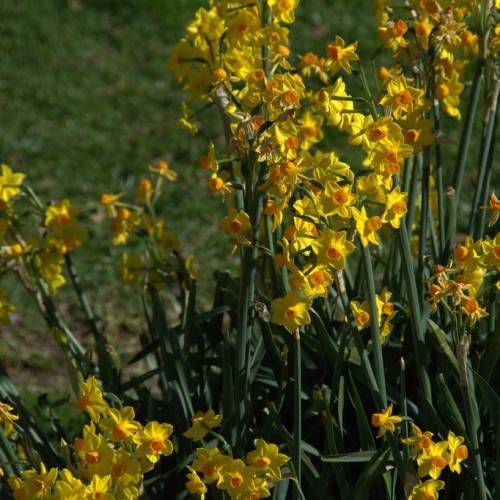
species daffodil
Narcissus jonquilla
Cycle:
Perennial
Watering:
Average
Hardiness Zone:
4 - 8
Flowers:
Flowers
Sun:
Full sun,part shade
Leaf:
Yes
Growth Rate:
Low
Maintenance:
Low
Salt Tolerant:
Yes
Care Level:
Medium
watering
Daffodils (Narcissus jonquilla) should be watered when the soil feels dry to the touch. During the growing season, water them once every 7-10 days, or when the soil feels dry. Make sure to water them slowly and thoroughly to avoid any waterlogging. During the summer, in warm weather, water more often, about every 5-7 days. When the weather starts to cool off in the fall, reduce watering to every 7-14 days, but check the soil moisture before watering. During winter, the daffodil will likely not need much water, but if it gets very dry, water lightly.
sunlight
The amount of sunlight and the timing of sunlight a daffodil (Narcissus jonquilla) needs will depend on the type of environment it is growing in. In general, daffodils prefer bright, indirect light and need at least 6 to 8 hours of full sunlight each day. When grown indoors, they can still benefit from being placed near a window or some other type of light source that provides the necessary amount of sunlight to keep the plant healthy. During the summer months, daffodils may need more sunlight to grow and bloom, so finding a spot in the garden that gets around 6 to 8 hours of full sunlight will help them thrive. In the winter, be sure to give them adequate light but avoid giving them too much direct sunlight as this can cause the plants to become overly stressed.
pruning
Pruning for a species of daffodil such as Narcissus jonquilla should be undertaken at least once per year, usually in early spring. The flowers should be removed once bloomed and spent, while the foliage should be left in place until it turns yellow. It’s best to then prune back the foliage at the end of its growing season, usually in late summer or early autumn. During the pruning process, be careful to avoid cutting back too much of the foliage at once, as this can affect the plant's ability to grow the following season.
